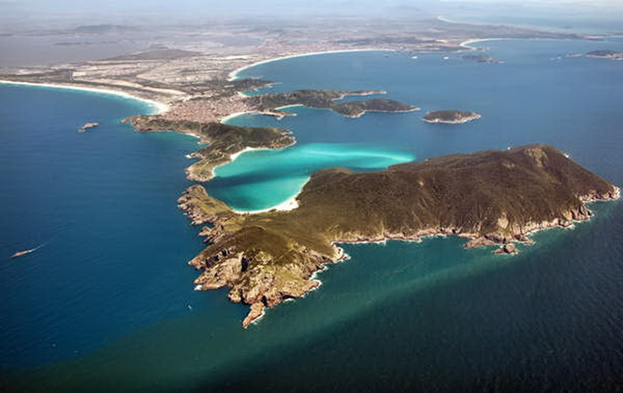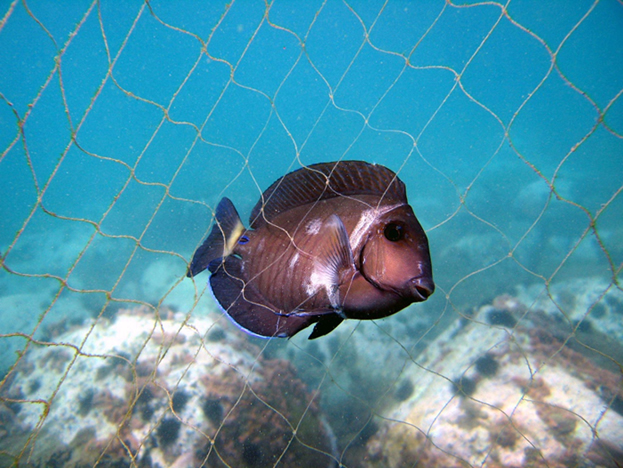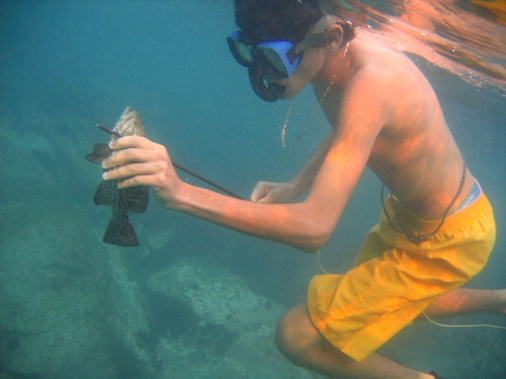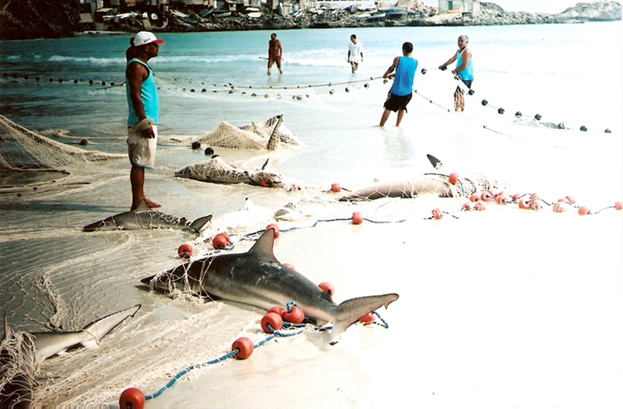New project: ROCKY SHORE Subsides for the management plan of marine protected area of
Arraial do Cabo
The Reef Systems Ecology and Conservation Lab - LECAR has just earned a grant from Fundo Brasileiro para
Biodiversidade – FUNBIO to develop the project: “ROCKY SHORE – Subsidies for the management plan of the
Arraial do Cabo Marine Extractive Reserve (ACMER). The grant aims to meet compensatory obligations under the
Negotiation Adjustment Agreement signed on September 13, 2013 between Chevron Brasil Upstream Frade Ltda
and the Brazilian Federal Public Ministry, with the intervention of the National Agency of Petroleum and the Brazilian
Institute of Environment and Renewable Natural Resources - IBAMA.
The ROCK SHORE project includes nine different objectives that aims to provide technical and scientific subsidies
for the management plan of the Arraial do Cabo Marine Extractive Reserve, a kind of sustainable multiuse reserve
included in the national plan of conservation units of Brazil . The objectives of the ROCKY SHORE consist of:
• Monitoring the structure of reef fish assemblages;
• Describe the spatial-temporal structure of the benthic community during different seasons;
• Verify trophic associations between reef fish and the benthic community;
• Apply methods to selection and establishment of a no take area;
• Identify impacts of recreational activities (fishing and diving);
• Assessing fish stocks dynamics from past to the present;
• Develop actions of environmental awareness and community involvement for the conservation of the marine
biodiversity;
• Educate and train agents to convey information on marine conservation;
• Manage, integrate and disseminate the obtained results, providing support to management and conservation
of the marine resources
Arraial do Cabo (23°58’S – 42°00’W - Rio de Janeiro state, Brazil) consists of an isthmus and two islands mostly
surrounded by rocky shores. Small-scale upwelling processes often occur because of the prevailing winds (mainly
in summer and spring periods) and the coastal morphology creates two distinct domains: the west side of the
isthmus is affected by cold waters (mean annual temperature approximately 18 °C), and the eastern side has
comparatively higher mean water temperatures, approximately 23 °C. For centuries, the city has followed its natural
vocation as a fishing village, with approximately 20,000 residents and 1,340 active fishers. In 1997, the
sustainable-use marine protected area was implemented, named Arraial do Cabo Marine Extractive Reserve, the
first of its kind in Brazil, a collaboratively managed marine protected area where only local fishermen are allowed to
exploit resources. The fishing gears used by traditional fishers are hook and line, gillnet, beach seine and hookah
spearfishing. The ACMER is divided into different zones with different levels of protection, there are some fishing
regulations but enforcement is poor, or non-existent, resulting in a typical overexploitation scenario.

Photo 1: View of Arraial do Cabo Marine Extractive Reserve.

Photo 2: Reef fish (Acanthurus chirurgus) caught in gillnet.

Photo 3: Small comb grouper (Mycteroperca acutirostris) caught by amateur spearfisher.

Photo 4: Group of sharks caught by artisanal fishers.
Written by: Moysés C. Carbosa, 06 February 2017
|













